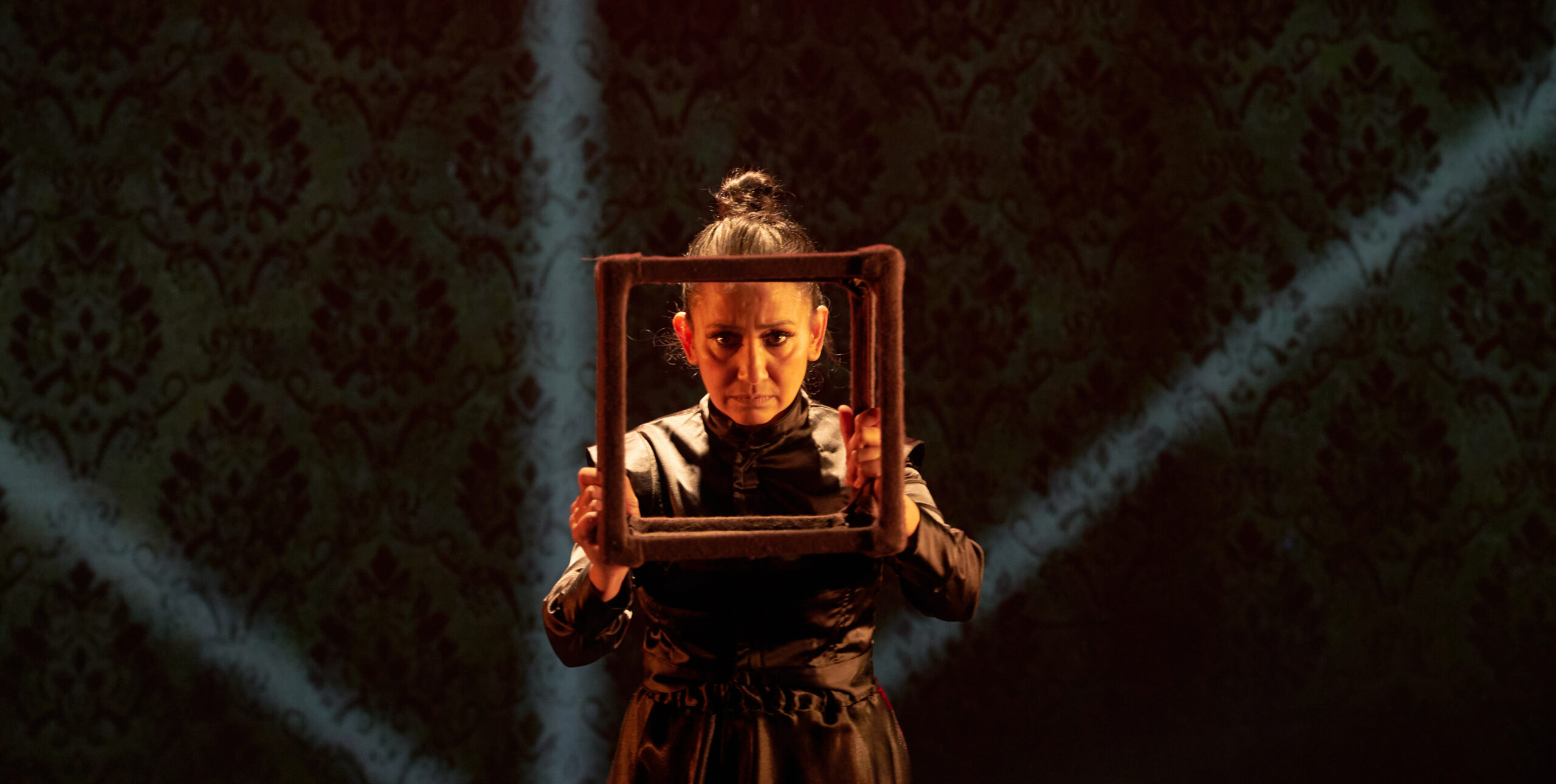Words by Ranjini Nair.
I was keen to attend Amina Khayyam’s Bibi Rukiya’s Reckless Daughter as a relative outsider to British South Asian dance. I say relative outsider, because even while I am trained in an Indian dance style, most of my experience of performing, teaching and watching a variety of these styles have been in India. And so, I was interested in learning more about the conversations taking place in and through these forms in the UK.
As the audience file into the auditorium, two dancers dressed in white, sit one corner of the stage looking at an spotlit empty white chair.
The premise of Khayyam’s work in Bibi Rukiya is loosely hinged on the Spanish playwright Federico Garcia Lorca’s ‘The House of Bernarda Alba’. Khayyam uses this framework to allude to how patriarchy conditions women to become their own oppressors.
As in the original, there is a widowed matriarch (played by Khayyam), intent on ensuring that if there is dance, it must be to her tunes. The three daughters react differently to this situation. The eldest acquiesces, though she shows her defiance, by changing the footwork just slightly, by keeping her fists clenched, by never coming close to her mother, even while following her movements. The middle one and the youngest are more rebellious, dressed up in colour, in heels, moving to Bollywood shot through with Beyonce, even though they are ultimately interrupted by their mother’s looming shadow.

I enjoyed Khayyam’s use of kathak’s hand gestures and movement phrases to suggest the characters’ muffling their own desires and their fitting themselves into ideals of womanhood. The lightwork and prop use in this section, with all the characters on stage, reinforces how patriarchy encages women and forces them to fit into neat boxes.
As the show progresses, you realise the youngest one has a secret. One that sees her ready to risk everything for her happiness. Dressed in red, this reckless daughter glides and flits across the stage. Her free movements are in sharp contrast to the controlled movements that her mother demands of her. Her sisters first seem jealous, but then quickly come to her defence. The three of them put up a united front against their mother, as they reply to her anger with footwork that is united and urgent, almost cornering as they move up and down the stage diagonal. But the mother is furious. She isolates the youngest. In this dance battle, the youngest gives it her all. But she finds that she is no match for her mother, and the patriarchy she represents. One of the last scenes has her lifeless body being adorned by her sisters and mother. The opening, with the empty chair, comes back to haunt me, and suddenly is no longer empty.
The piece touches on important and resonant themes, yet while the sisters show camaraderie (and also, competition), I felt that there could be, perhaps, more intergenerational solidarity. The sisters never understand their mother, and the mother never understands her children. The idea being that patriarchy undoes any potential for this cross-generational solidarity to develop. I was struck by the lack of this intergenerational solidarity in the work. In some ways, I wished the piece had explored that lack more, because otherwise the characters come across as slightly one-dimensional. Is Bibi Rukiya lonely when her children threaten to overthrow her power? Do her children recognise their mother’s cold-heartedness as something beyond mere moralising and tyranny? In the piece, the mother is forever domineering, and the children forever afraid or rebellious, not often inhabiting the grey for the audience to see the conditioned patriarchy, alluded to in the programme description, at play. There’s a hint of grief or remorse in Khayyam’s final solo, but only when her daughter is already dead.
In conclusion, Khayyam presents a great idea that would benefit from some additional development. For me, personally, I enjoyed the large audience that descended at The Place to support an important conversation on patriarchy put forward by the piece.
